TL;DR
Holbrook’s new ARMA line is loud, firm, and unapologetically built for impact. Featuring a vertically fused Dual Density™ Core, full perimeter foam, and your choice of raw carbon or metallic PET weave faces, these Gen 3 paddles deliver serious power and bold feedback straight out of the wrapper.
I tested all four models:
- ARMA T – Most explosive, loudest contact, and my personal favorite. Big firepower with crisp structure.
- ARMA Metallic T – Same shape as the T, but with a softer face feel. Muted feedback and more forgiveness.
- ARMA Metallic X – Hybrid shape with weight up top. Strong for two-handers, especially backhands.
- ARMA S – Standard shape, low swing weight, and ultra quick in hand. Most forgiving of the four.
Each paddle plays differently, but they all share Holbrook’s aggressive construction approach: a uniquely layered core, strategic weighting, and sharp-edged energy return. If you like your paddles quiet and soft, skip this one. But if you want sound, structure, and off-the-bounce confidence, this lineup delivers.
Use code MPB at checkout for 15% off when they drop on June 10.
Introduction
The Holbrook ARMA series doesn’t try to fit in—it’s built to stand out. In a market saturated with Gen 3 paddles chasing soft feel and quiet touch, ARMA does the opposite. It’s bold. It’s loud. And it brings a vertically layered core design that’s unlike anything else on the market.
Holbrook sent me all four ARMA models for testing—the ARMA T, ARMA Metallic T, ARMA Metallic X, and ARMA S. As always, they had no say in this review. All conclusions are my own, based on hands-on court testing and performance data. If you decide to pick one up when they officially launch June 10, you can use code MPB to save 15%.
What sets this series apart is its core. Holbrook fused two different honeycomb layers vertically with a carbon bonding strip in a shape they call an “upside-down U.” That, paired with a full foam wrap and internal weighting, gives each paddle a distinct mix of energy return, stiffness, and stability. And the sound? It's one of the most aggressive contact signatures I’ve heard—especially on the carbon-faced T model.
If you’re into structure, pop, and unapologetic feedback, this lineup has something worth paying attention to. Let’s break it down.
Paddle Construction & Core Technology
What sets the Holbrook ARMA series apart isn’t cosmetic. It’s structural. The defining feature of this Gen 3 lineup is the Dual Density™ Core, a vertically layered honeycomb design that pushes beyond typical thermoformed builds.
At its foundation, each paddle fuses two distinct layers of polypropylene honeycomb:
- The bottom layer features larger 10mm cells, tuned for flex and rebound.
- The top layer uses tighter 8mm cells, which stiffen the face and sharpen feedback.
These layers are vertically stacked—not horizontally blended—and bonded together with a carbon fiber bonding strip that runs through the center of the paddle like an arch, creating a load-bearing “upside-down U” structure. This is not a tweak on a foam core. It’s a different construction entirely.
Around that core is a full perimeter foam ring, a now-standard element in Gen 3 paddles. But paired with the vertical layering, the result is a paddle that plays firmer, louder, and more responsive than most 14mm builds. There's very little give, especially on the carbon-faced models. Impact feels direct, even brash—something players who like clear tactile feedback will appreciate.
Internally, Holbrook also added strategic weighting in the throat. This brings up twist weight—a spec that improves off-center stability and forgiveness. You can see this clearly in the x-ray images I’ll include later. It’s subtle in feel but effective during play, especially on blocks and hand battles.
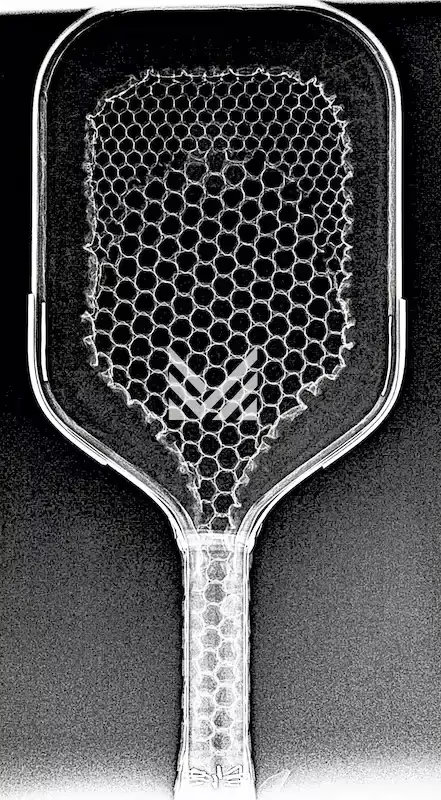
On the outside, all four paddles come with an edge guard—a smart move that preserves the foam’s integrity and protects the carbon wrap from chipping. It may add a little weight, but it also gives a tighter perimeter structure that helps the paddle hold shape over time.
What this all adds up to is a paddle line that doesn’t play soft. It plays intentional, loud, and firm. Every contact gives you feedback. Every mishit tells you something. For players who like structure, response, and a clear sense of where the ball hit the face, this core design delivers.
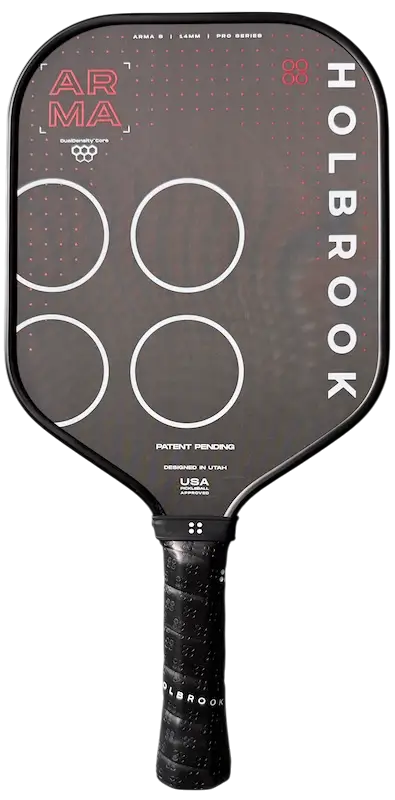
- Control
Best for strategic players who favor precision and placement over power, excelling in slow play and careful ball manipulation. - All-Court
Designed for versatile players who want the best of both worlds. These paddles balance control, power, and speed, adaptable to various playing styles. - Power
Ideal for aggressive players (aka, "bangers") who prioritize fast, powerful gameplay, sacrificing some control and sweet spot size for maximum force.
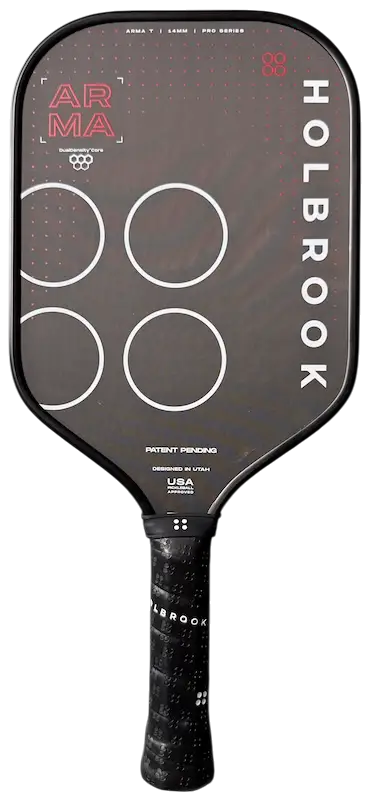
- Control
Best for strategic players who favor precision and placement over power, excelling in slow play and careful ball manipulation. - All-Court
Designed for versatile players who want the best of both worlds. These paddles balance control, power, and speed, adaptable to various playing styles. - Power
Ideal for aggressive players (aka, "bangers") who prioritize fast, powerful gameplay, sacrificing some control and sweet spot size for maximum force.
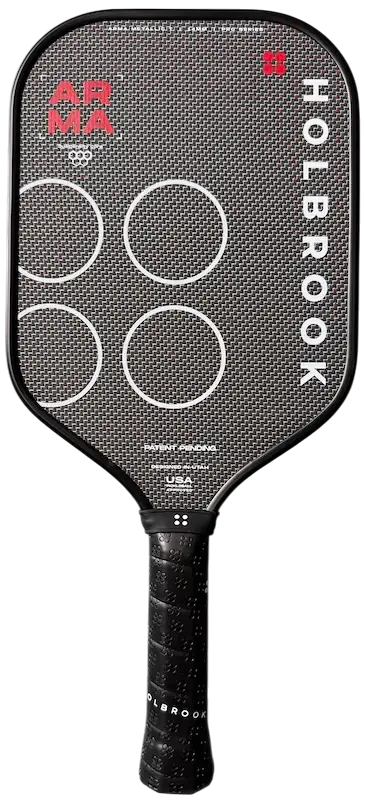
- Control
Best for strategic players who favor precision and placement over power, excelling in slow play and careful ball manipulation. - All-Court
Designed for versatile players who want the best of both worlds. These paddles balance control, power, and speed, adaptable to various playing styles. - Power
Ideal for aggressive players (aka, "bangers") who prioritize fast, powerful gameplay, sacrificing some control and sweet spot size for maximum force.
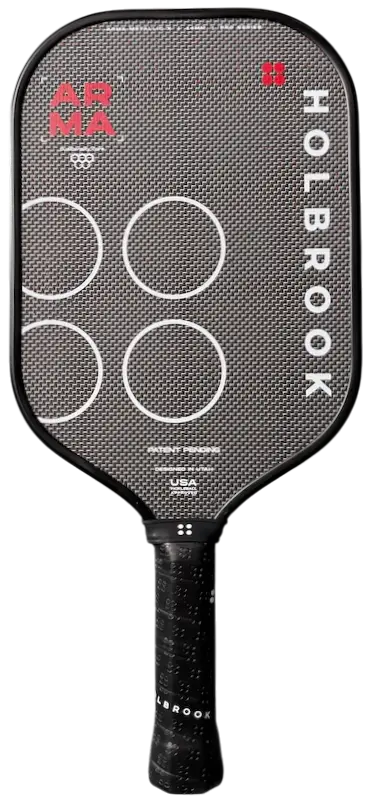
- Control
Best for strategic players who favor precision and placement over power, excelling in slow play and careful ball manipulation. - All-Court
Designed for versatile players who want the best of both worlds. These paddles balance control, power, and speed, adaptable to various playing styles. - Power
Ideal for aggressive players (aka, "bangers") who prioritize fast, powerful gameplay, sacrificing some control and sweet spot size for maximum force.
Surface Materials & Spin Texture
Face material has become one of the biggest variables in Gen 3 paddle design, and Holbrook gives players a clear choice in the ARMA lineup: raw carbon fiber or metallic PET weave. Both use a coarse peel-ply texture, but they feel—and sound—very different.
Raw Carbon Fiber (ARMA T & ARMA S)
The ARMA T and S use a Toray-style raw carbon face that’s firm, responsive, and unfiltered. This surface plays with the most direct feedback in the lineup. It amplifies sound, contact feel, and energy transfer on drives. If you prefer crisp connection and audible pop off the face, this is the material to go for.
From a spin standpoint, the carbon fiber models land in a strong—but not elite—tier. In testing:
- The ARMA T produced 2186 RPM of topspin (44th percentile).
- The ARMA S delivered 2200 RPM (51st percentile).
That’s more than enough for shaping third-shot drops, rolling topspin dinks, and flick counters, but it doesn’t rival the roughest raw carbon or etched face paddles in the game. Still, combined with the paddle’s structure, the spin output feels accessible—easy to generate, even without hyper-pronated motion.
Metallic PET Weave (ARMA Metallic T & X)
The ARMA Metallic T and X switch to a PET-based metallic weave, which softens the response slightly and gives the face a more muted feel. PET—polyethylene terephthalate if you're Googling—adds a bit of dwell time, allowing the ball to sit longer on the face. It doesn’t feel squishy or slow, but it does take the edge off the sharpest feedback.
Spin here holds steady:
- The ARMA Metallic T tested at 2215 RPM (59th percentile).
- The ARMA Metallic X matched that exactly: 2215 RPM.
That puts both metallic-face models near the top of the “good but not outrageous” spin tier. You can shape shots. You can flick effectively. And for players who find raw carbon too jarring or pingy, this PET texture is a viable alternative.
Texture & Durability
All models use a coarse peel-ply texture that’s molded into the surface rather than sprayed on. That means:
- It should last longer than painted textures.
- You’ll see less spin degradation over time.
- There’s no sticky overgrip feel—just dry grit that grabs the ball on contact.
Combined with Holbrook’s stiff core architecture, this gives the paddle face enough bite to feel reliable, even when accelerating through contact on a flick or topspin roll.


Holbrook Pickleball
Arma S 14mm
Power
$
259.99
holbrookpickleball.com
Unknown

Holbrook Pickleball
Arma T 14mm
Power
$
259.99
holbrookpickleball.com
Unknown

Holbrook Pickleball
Arma Metallic T 14mm
Power
$
279.99
holbrookpickleball.com
Unknown

Holbrook Pickleball
Arma Metallic X 14mm
Power
$
279.99
holbrookpickleball.com
Unknown
Shape Comparisons & Playstyle Fit
Each ARMA model has its own shape, balance, and tactical fit—and Holbrook clearly designed this lineup to serve different player archetypes. Let’s break down what makes each shape feel and perform the way it does on court.
ARMA T (Carbon) – Elongated Drive Frame
The ARMA T is elongated with a 5.75-inch handle, pushing weight toward the upper third of the face. The result is serious plow-through and deep drive capability, especially if you make contact higher on the paddle. You’ll feel that vertical layering and internal mass combine to deliver some of the strongest baseline drives in the lineup. But it comes at a cost—maneuverability.
If you’re used to a fast kitchen game, this shape can feel heavy in quick exchanges. That said, if you’ve got structured mechanics and a drive-heavy game, this paddle hits deep and loud with minimal adjustment. The raw carbon face only adds to the immediacy of feedback and rebound.
ARMA Metallic T – Slightly Softer Version
Same shape, same swing profile—but with a PET-based surface that introduces a touch of dwell and forgiveness. The feel here is just a little more accommodating, particularly on resets and mid-speed counters. The face won’t bite quite as hard as raw carbon, but it still delivers punch and stability.
This shape is ideal for players who want the elongated power frame, but don’t want every off-center shot to sting or misfire. It offers more control without completely giving up drive pressure.
ARMA Metallic X – Hybrid Shape with Top Mass
This paddle shifts shape and mass. The hybrid frame measures slightly wider, with a shorter 5.5-inch handle, which moves more weight into the face and makes it feel top-heavy. The mass high on the paddle makes it ideal for players who swing through the top edge—especially on backhand counters or wrist-led flicks.
This isn’t the quickest paddle in the group, but it’s strong on leverage, especially for players who keep contact high or generate spin late in the stroke. For singles players or those with strong forehands/backhands, it has a commanding feel at contact.
ARMA S – Standard Widebody for Speed and Defense
This is your control-oriented shape. It has a traditional 16” x 8” layout and the highest twist weight in the series, meaning off-center shots stay more stable. The shorter handle and wider face make it ideal for players who value fast resets, defensive hands, and reliability under pressure.
It’s not built for full-speed driving or deep baseline power. Instead, it’s the paddle that helps you win long rallies, stay in firefights, and feel confident blocking pace. If you’re coming from a Gen 2 control paddle, this will feel instantly familiar—but with a firmer, more assertive response.
Performance Specs & Metrics
Now let’s get into the numbers—the kind of performance metrics that separate spec-sheet promises from on-court reality. These paddles were all tested on-court and measured for serve speed, punch volleys, spin RPM, swing weight, twist weight, and static weight. And the results? Telling.
ARMA T (Carbon Face – Power Model)
This is the most aggressive paddle in the lineup. It’s built for drive-first players who want out-of-the-box power with a raw carbon face and no tuning required.
- Serve Speed: 56.0 MPH (84th percentile)
- Punch Volley Speed: 39.0 MPH (94th percentile)
- Spin: 2186 RPM (44th percentile)
- Static Weight: 8.23 oz
- Swing Weight: 122.5
- Twist Weight: 6.55
- Firepower Score: 81
It feels explosive. The swing weight gives it punch; the raw carbon face gives it bite. For aggressive players who can manage weight, this is the flagship ARMA.
ARMA Metallic T (Metallic PET Face – Softer Twin)
Same shape, same platform, slightly different face material. The metallic weave tones down the stiffness and sharpness, giving the paddle a bit more dwell and forgiveness.
- Serve Speed: 55.75 MPH (59th percentile)
- Punch Volley Speed: 37.5 MPH (75th percentile)
- Spin: 2215 RPM (59th percentile)
- Static Weight: 8.1 oz
- Swing Weight: 121.1
- Twist Weight: 6.3
It plays more muted and slightly more forgiving. Great for players who like the ARMA T’s frame but want less raw crack on contact.
ARMA Metallic X (Hybrid Shape – Backhand Bias)
This model shifts weight slightly higher and centers more mass toward the face, making it a good option for two-handers and players who generate power up top.
- Serve Speed: 54.5 MPH (30th percentile)
- Punch Volley Speed: 36.5 MPH (51st percentile)
- Spin: 2215 RPM (59th percentile)
- Static Weight: 8.2 oz
- Swing Weight: 118.15
- Twist Weight: 6.5
- Firepower Score: 40
It doesn’t hit weak—but the output is more gradual. Think pressure over pop, leverage over explosiveness.
ARMA S (Standard Shape – Control Pick)
If quickness, forgiveness, and hand speed matter more than drive velocity, this is your model. The lowest swing weight in the series makes it easy to maneuver and recover mid-rally.
- Serve Speed: 54.5 MPH (30th percentile)
- Punch Volley Speed: 35.5 MPH (26th percentile)
- Spin: 2200 RPM (51st percentile)
- Static Weight: 8.03 oz
- Swing Weight: 110.25
- Twist Weight: 7.15
It won’t win power contests, but it keeps you in the point and wins with consistency and speed.
Recommendations: Which ARMA Is Right for You?
The Holbrook ARMA series isn’t one-size-fits-all. Each model is designed with distinct trade-offs in mind, and choosing the right one depends on how you play, what you prioritize, and how much paddle you’re comfortable managing.
ARMA T – For Aggressive All-Court Offense
If your game revolves around drive pressure, putaway shots, and structured mechanics, the ARMA T is the standout. Its elongated frame, raw carbon face, and aggressive swing profile offer the most explosive blend of depth, power, and plow-through in the lineup. You’ll feel the paddle push back at you on full swings, and if you like feedback with force, this is it.
But there’s weight to manage. At 122.5 swing weight and over 8.2 oz static, this isn’t a featherweight. For players who are used to heavier setups—especially those coming from thermoforms or Gen 3+ builds—it’ll feel confident and capable. Add tape only if you can handle it.
Best for: two-handed players, baseline attackers, high-swing-speed hitters.
ARMA Metallic T – For Balanced Offense With Softer Touch
Same frame, less bite. The Metallic T trades sharp feedback for more dwell and forgiveness. The metallic PET face dulls some of the impact and softens response slightly, especially on mishits and resets.
If you like the ARMA T but want a slightly more relaxed contact feel—or if you found the carbon face too reactive—this is your middle ground. It still hits well, but with a touch more room for error.
Best for: mid-range all-court players, those new to Gen 3 paddles, and players looking for forgiveness without a drastic drop in power.
ARMA Metallic X – For Top-Heavy Contact and Leverage
The Metallic X plays heavier up top, making it the most face-dominant paddle of the bunch. That’s great if you like forehand flicks, backhand counters, and high-contact drives, but it can feel slower during resets or fast kitchen exchanges.
This is a paddle for players who generate their own power and want help from the paddle head when finishing points. It's not as plug-and-play as the others, but it rewards clean contact with noticeable depth and directional control.
Best for: singles players, backhand-dominant players, and anyone who prefers upper-face contact in their swing arc.
ARMA S – For Speed, Recovery, and Defensive Stability
The ARMA S is the most approachable and forgiving of the lineup. It’s the lightest in swing weight, widest in shape, and most stable on off-center shots. That combination makes it ideal for transition play, hands battles, and recovery under pressure.
While it doesn’t have the raw firepower of the T or the leverage of the X, it’s the best option for consistent resets, quick redirections, and staying alive in the point.
Best for: control-first players, transition specialists, and anyone coming from widebody or Gen 2 shapes.
Price and Value
With launch prices of $259.99 for the carbon models (ARMA T and ARMA S) and $279.99 for the metallic face models (ARMA Metallic T and ARMA Metallic X), the Holbrook ARMA series enters the premium Gen 3 arena alongside brands like JOOLA, Selkirk, Gearbox, and Proton. That’s a bold move—and it raises the stakes. At these price points, performance and durability have to be more than just marketing promises.
Use code MPB at checkout to knock 15% off, bringing the carbon models down to ~$221 and the metallic models to ~$238. For Gen 3 paddles with vertically stacked dual-density cores, internal throat weighting, and full perimeter foam, those prices are competitive—if the build holds up.
Holbrook adds confidence with a one-year warranty for original purchasers. It covers manufacturing defects and applies to paddles bought through authorized channels. That warranty isn’t industry-leading, but it’s enough to differentiate from fly-by-night paddle drops with no support structure.
What makes this series worth the money isn’t just specs—it’s structure. The “upside-down U” core, the PET or raw carbon face options, and the internal weighting profile all contribute to paddles that feel purposeful, consistent, and ready to play from day one. There’s no extended break-in period, and minimal need for post-purchase tuning.
That said, these paddles aren’t for everyone. If your style leans toward dwell, softness, or elite-tier spin, there are other platforms that will suit you better. But if your priority is structure, stability, and a paddle that hits clean and assertive straight out of the wrapper, the ARMA line stands out as one of the most unique and well-built entries of the 2025 release calendar so far.
Closing Thoughts
The Holbrook ARMA series doesn’t just follow Gen 3 trends—it breaks from them. With a vertically layered Dual Density™ core, bold surface options, and some of the loudest, crispest contact feedback of any 2025 paddle release, this lineup leans unapologetically into performance.
Each shape is deliberate:
- The ARMA T gives you immediate drive pressure and aggressive structure.
- The Metallic T tones that down with a slightly more forgiving face.
- The Metallic X offers top-loaded leverage and hybrid precision.
- And the ARMA S stands out as one of the most maneuverable and balanced control paddles in this price bracket.
From construction to on-court execution, Holbrook took a clear stance with this design. They didn’t chase softness. They didn’t try to mimic thermo-style feel. Instead, they built a platform that feels precise, loud, and stable—a modern Gen 3 paddle for players who want their gear to hit back.
If you’re on the hunt for something different—something structured, tactile, and tuned for players who don’t mind hearing their paddle speak up at contact—the ARMA series deserves a look.
And remember: when these paddles officially launch on June 10, you can use code MPB at checkout to save 15%.
Let me know what shape you’re most curious about—or which Gen 3+ paddles you'd like me to compare this to next. Thanks for reading, and I’ll see you in the next post.
Discount Code
Similar Paddles


%20(1100%20x%20220%20px)%20(1000%20x%20300%20px)%20(1).webp)



















